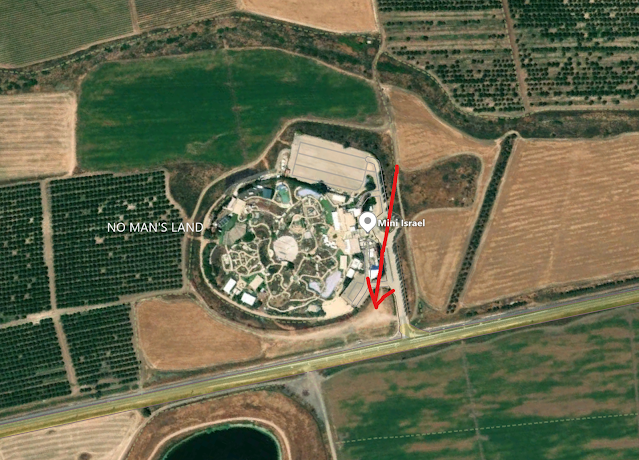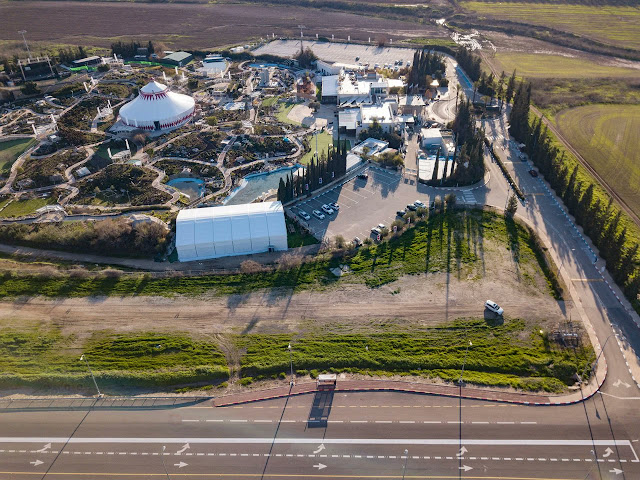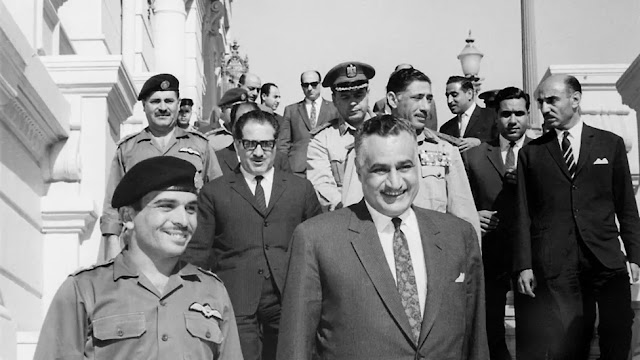Historically, the Valley of Ayalon in Palestine, also known as Ajalon, is mentioned in the renowned Amarna letters of ancient Egypt. Specifically, a series of letters were sent by a local chieftain in ancient Jerusalem, seeking military aid from Egypt to protect the city of Ajalon against invaders.
The recipient pharaoh of these pleas remains unclear. While some historians suggest Amenhotep III as the addressee, others speculate that the letters were sent to either Akhenaten or his son Tutankhamun.
Alternatively, there is no recorded evidence of Egyptian military aid being dispatched to the area, at least not promptly.
After a span of 3,259 years (according to AI calculations), a contingent of Egyptian fighters finally arrived in the Valley of Ayalon in response to the plea of East Jerusalem's ruler.
Israeli Yediot Ahronoth and Haaretz newspapers “Please note that Yediot Ahronoth published the report in Hebrew while Haaretz has got its infamous paywall” as well as veteran Israeli journalist Yossi Melman on Twitter revealed after five decades of Israeli military censorship the horrifying truth.
That's what the Israeli media reported as published by Haaretz, Yediot Ahronoth, and Melman but first little official background.
On May 30, 1967, Egypt and Jordan signed the Joint Defense Group agreement, which led to the deployment of Egyptian officers and military units led by General Abdel Moneim Riad.
They arrived on June 1, 1967. When the war broke out, Riad was appointed commander of the Jordanian front.
During this time, two Egyptian special forces battalions, also known as Thunderbolt or Commando battalions, were deployed to the West Bank near Latrun.
What happened according to the Israelis
According to Israeli sources, these battalions were tasked with carrying out raid operations behind enemy lines, specifically targeting Lod Airport as well as another airfield in Ramla. However, they were provided with outdated information—Ramla had no airfield or airport. Eventually, the Egyptian commandos found themselves in the Ayalon Valley, which was then a no-man's-land.
 |
| An Israeli tank at the Valley of Ayalon in June 1967 taken by the Israeli Army's famous press officer and photographer Ilan Brunner |
A battle ensued between the two battalions and the Israeli army when a group of Israeli tanks found them. Militant settlers led by Ze'ev Bloch from the leftist secular Nashon Kibbutz, which was close to the valley joined the fight after seeing the tanks.
Bloch, now 90 years old, provided an eyewitness account to Melman, stating that some Egyptian commandos fought bravely, some were captured, while others managed to escape.
During the battle, the Israeli army fired mortar shells, which set thousands of acres of uncultivated bushes on fire. According to Israeli sources, at least 20 Egyptians died in the ensuing blaze, as they found themselves trapped and unable to escape. In total,80-70 Egyptians were killed on that day and at that location.
Haaretz's report suggests that the Israeli army may have used prohibited phosphorus shells and that some of the Egyptian fighters may have been injured or surrendered.
The following day, the Israeli army dispatched soldiers with a bulldozer to dig a pit 20 meters long at plot 5 of the kibbutz, into which the dead bodies of the Egyptian commandos were pushed and covered with soil, without any form of marking.
Bloch and a few other kibbutz members witnessed Israeli soldiers looting the belongings of the Egyptian commandos.
Unofficial Egyptian testimonies
The Egyptian official version of what really happened is still unknown, as the Egyptian government has not yet publicly released its official records about the Six Days War. While some remain hopeful that a Freedom of information act will be drafted soon, I have my doubts.
Instead, we depend on the oral history and testimonies of the veterans.
Tabloid news website Cairo 24 interviewed veteran army general Mokhtar El-Far, who led one of those Egyptian battalions or rather patrols to be accurate. We also got the statements of veteran army general Abdo Arafa to 1973 historians forums as well as the official Jordanian version. Here is what they said.
Nine Egyptian patrols made of 90 commandos each from “Thunderbolt Battalion 33” and “Thunderbolt Battalion 53” arrived from North Sinai to Amman on 3 June 1967. The patrols were divided into two groups “General” and “Helmy”, one that headed to Ramallah while the other headed to Janin in West Bank.
Despite their repeated requests to visit the reconnaissance bases, they were not allowed until 5 June 1967 as their bases were attacked by strikes. That day General Abdel Moneim Riad issued his orders to the Egyptian commandos to start moving with the last light on that day and to go behind the enemy lines to destroy Herzliya, Ein Shemer, Kfar Sirkin, Lod, and Ramla airports and the radar stations located in them.
The mission proceeded under rushed and chaotic circumstances led by Captain Medhat El-Reis, with the Jordanian side assigning two to three Jordanian guides per patrol. Unfortunately, all the guides accompanying the Egyptian patrols from the West Bank fled leaving them without maps, causing a loss of communication and information.
Lacking guides and facing an important mission that needs to be carried, the Egyptian commandos decided to adopt a general approach, which involves leaving the West Bank as a "starting point" while having a view of the sea.
The estimated remaining distance is around 17 to 20 kilometres within the occupied territories to reach Ramala airport.
At the same time around 100 Israeli tanks started heading towards East Jerusalem. A confrontation took place and according to El-Far, Captain El Reis, along with 32 members of the Egyptian patrols, were injured after inflicting significant losses on the Israeli side.
“The enemy retaliated as an act of revenge, not as a response to the attack.” The old Egyptian veteran said describing What happened was an act of revenge.
“The wounded Egyptians were captured, run over by tanks, and buried.” Retired Egyptian general El-Far said.
El-Far stated that what remained from the Egyptian forces remained within the occupied territories for 21 days starting from 5 June when they reached the outskirts of Israeli cities, even reaching Tel Aviv itself.
The remaining Egyptian commandos withdrew from the occupied territories after hearing an order through the Egyptian radio waves. Returning to Amman, they headed to Syria and from Syria on board a ship they headed to Alexandria.
Upon their return to Egypt, they informed the Egyptian Armed Forces’ general command about what happened. “We did not receive the necessary attention at that time, as the focus was on understanding the main reasons for the 1967 defeat and identifying who was responsible." The old veteran said.
Meanwhile, veteran commando Abdo Arafa believes that the Egyptian forces were set up by the Jordanians.
Plot No.5 or Mini-Israel
Back again to the Ayalon valley, here is an aerial view taken by an Israeli military plane on 10 June 1967 showing allegedly the location of the mass grave. It was allegedly that spot with a pile of rocks.
 |
| The red circle showed what can be described as a pit in the ariel photo taken on 10 June 1967. The question is why that photo was taken. "Ynet" |
At Nashun Kibbutz, Bloch and other settlers refrained from speaking about what happened, primarily due to the wartime circumstances, but they carried a sense of shame about the incident according to him.
In the 1990s, another kibbutz member called Dan Meir tried to bring the matter to light. Late Meir tried to reach the Israeli officials as well as the Egyptian ambassador to Tel Aviv but failed. In the end, he tried with the media. His attempt was going to succeed if not for Israel’s infamous military censorship law.
Meir’s faith to give the Egyptian commandos a proper burial as well as recognition did not turn into a crusade. He was a lone man as the Kibbutz agreed to give the land with an unmarked mass grave to a group of investors to build a miniature park.
Inaugurated in 2002 with 15% official funding from Israel's tourism office, Mini Israel is a 60,000 square meter park that showcases hundreds of miniature buildings from across Israel, including those associated with Judaism, Christianity, and Islam in occupied East Jerusalem.
According to speculations, Yediot Ahronoth believes that the mass grave is located at a narrow, grey, obscure strip of land crammed between the park's high fences and nearby Route 424.
 |
| The mass grave is located in that empty space between the park and Route 424 according to Yediot Ahronoth |
While Haaretz believes that the mass grave is in that garden outside the park on the right.
 |
| Haaretz says that the mass grave is outside the park in the garden on the right |
That can be resolved by scanning the whole area.
Official Reactions from Egypt and Israel
Following these distressing revelations, the Egyptian Foreign Ministry announced that it had instructed the Egyptian embassy in Israel to investigate the matter.
On July 11, Egyptian President Abdel Fattah El-Sisi received a telephone call from the Israeli Prime Minister at the time, Yair Lapid. This was their first conversation since Lapid assumed the premiership. Alongside the expected discussions on regional and Palestinian developments, as well as Egypt's commitment to a two-state solution, the two leaders addressed the elephant in the room, or rather, the remains of the elephant in the room.
Quoting directly from the official English translation provided by the Egyptian presidency in the readout of the phone call released on July 11, 2022:
"The two sides agreed that the Israeli authorities will conduct a full and transparent investigation into Israeli press reports regarding historical incidents that occurred during the 1967 war concerning Egyptian soldiers buried in Jerusalem. Mr. Lapid confirmed that Israel will address this matter in a positive and transparent manner, and that it will communicate and coordinate with the Egyptian authorities regarding any developments in order to ascertain the truth."
The English readout released by the Israeli Ministry of Foreign Affairs on July 10 made no mention of this issue. The following day, Israeli media reported that El-Sisi had raised the matter in the phone call, and Lapid informed him that he had instructed his office to investigate the reports. Lapid also gave directives to Brig. Gen. Avi Gil, the military secretary, to thoroughly examine the issue.
Unofficially and unsurprisingly we found younger generations of Egyptians wondering if that mass grave holds within the remain of their great uncle. A young Egyptian tweep shared online that her grandmother was informed by a psychic in Cairo that her son, a commando was burnt alive during the war.
Based on my observations, the former cabinet led by Lapid did not have a problem with returning the bodies of Egyptian soldiers to Egypt. However, we are now dealing with one of the most right-wing nationalist cabinets in Israeli history, led by Benjamin Netanyahu. I fear that we may not see the return of our soldiers under this administration.
According to Kann News in November, Lapid's cabinet had considered erecting a monument to commemorate the Egyptian commando soldiers who were killed and buried in that transformed garden-mass grave.
I do not believe that a cabinet led by Itamar Ben-Gvir would erect a monument to commemorate Arab Egyptian commando soldiers. Such a monument could provide hope for peace in the Middle East, but unfortunately, I hold no such hope. We are faced with a cabinet that explicitly rejects the two-state solution.
However, a year later, it seems that people have forgotten about the whole issue.
My two cents
Regardless of whether the Egyptian soldiers were burned alive due to a fire ignited by mortar or phosphorus shells, as claimed by the Israelis, or if they were run over by tanks, as the Egyptians assert, one fact remains undeniable: these soldiers were killed and buried in an unmarked grave, far away from their homes and families.
This fact highlights a clear violation of the Geneva Conventions, which govern the laws of war. Burying enemy fighters in unmarked graves without notifying the International Committee of the Red Cross (ICRC) is a direct violation of the Fourth Geneva Convention.
Furthermore, it seems implausible that all the soldiers were deceased. Logic dictates that there must have been survivors who were injured. If that were the case, then their subsequent killing would constitute another violation of the Geneva Conventions, like the infamous Shaked incident.
The unanswered question of why the Israeli army decided to bury the Egyptian commandos in an unmarked mass grave without telling the ICRC remains to this day. Also, it was an interesting fact to see that the Israeli Army's long-time press officer and photographer Ilan Brunner paid a visit to the Ayalon Valley.
Ironically, in 1967, it was the party that emerged victorious in the war—the Israeli army—that committed a series of war crimes, reaching a systemic level. However, Israelis often try to deceive themselves regarding these events. Ze'ev Bloch, for instance, attempts to justify the atrocities that occurred 55 years ago by suggesting that both Arabs and Israelis committed war crimes.
On another thought, I believe he and others in their Kibbutz had to justify what had done to live with a mass grave in their plot 5 for decades before Mini-Israel would build over it.
The next time you plan to visit Mini Israel, please remember that you may be walking on an unmarked mass grave.



Your 2 cents are worth a million dollars. Thanks
ReplyDeleteThe next time you visit Egypt, remember that there are no Jews. Jews were in Egypt before Arabs. Why are there none.? Could this blogger please list any part of the world where she thinks Jews should be allowed to live? Could she list all the places in the Arab and Muslim world where Jews are allowed to own land?
ReplyDeleteHaaretz is communist not Israeli beside she hold a huge grudge on the Jewish state.
ReplyDelete